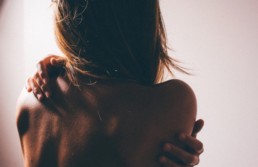
Traditional Chinese Medicine dates back thousands of years, but that doesn’t mean it is obsolete. These therapies are still used regularly in Asia, and they are gaining widespread acceptance in western world.
The beauty of Traditional Chinese Medicine is that it focuses on whole-body wellness. One of the core principles is that all organs, systems, and tissues are interconnected, so practitioners don’t just focus on relieving symptoms.
Instead, they look for the root cause of the symptoms – the underlying health condition that has caused imbalance – and they use a variety of methods to restore balance to the mind, body, and spirit.
In some cases, treatments include making adjustments to lifestyle factors, such as increasing the quality and quantity of sleep, reducing stress, and reconsidering the foods you eat.
Often, companion therapies are added. These might include participation in gentle physical activities that combine precise movement with mindfulness. Examples include qigong and tai chi.
For more stubborn problems, practitioners of Traditional Chinese Medicine may suggest massage, acupuncture, and/or herbal remedies. The specific herbs are often a combination that is customized to meet the unique needs of your body.
Researchers are starting to examine Traditional Chinese Medicine more carefully, and they are finding important benefits in using these therapies alone or in conjunction with standard western medicine.
In a few cases, they have discovered that Traditional Chinese Medicine is actually more effective at resolving uncomfortable conditions than the current medications and therapies available from western physicians.
Dermatitis is an unexpected example of conditions that respond well to Traditional Chinese Medicine.
Asian countries have long used Bu-Zhong-Yi-Qi-Tang (BZYQT) to treat this condition, and it tends to be more effective than products developed through pharmaceutical companies.
Symptoms of Dermatitis
Dermatitis is the sort of medical condition that plagues sufferers in two ways.
First, there is the discomfort of physical symptoms. Dermatitis causes skin inflammation, which makes it dry and cracked or red and swollen.
Sometimes, the affected area is itchy, and other times the condition causes pain or a burning sensation. There may be rashes or blisters.
Severity of symptoms varies from person to person. Some have near-constant symptoms, while others experience occasional flare-ups due to environmental factors, exposure to irritants, stress, and other triggers.
The second major issue is the fact that dermatitis can show up just about anywhere on the body. It is particularly disheartening when it appears on the face, hands, or other exposed areas.
Patients with very visible dermatitis often feel self-conscious, and though it is not contagious, they lose their confidence in social and professional situations.
Causes of Dermatitis
There are several different types of dermatitis, and each has a different cause.
Generally speaking, causes are a combination of age, family history, existing and underlying medical conditions, allergies, the environment, and asthma. Even the simplest behaviors can be troublesome.
For example, frequent hand washing removes protective oils from the skin, which can lead to dermatitis on hands.
These are the four types of dermatitis you are most likely to encounter:
- Eczema (Atopic Dermatitis) – This condition typically develops where skin must bend and stretch – for example, on the front of the neck, inside the elbows, and behind the knees. Many people with this sort of dermatitis have it for a lifetime. Researchers believe there is a genetic component to the condition, and certain environmental and lifestyle factors make it worse. In some cases, it can be caused by an immune system dysfunction, and may be one of several related symptoms.
- Contact Dermatitis – This type of dermatitis is caused by external factors – your skin comes in contact with an irritant that causes symptoms. Plants like poison ivy, poison sumac, and poison oak are notorious for causing dramatic cases of contact dermatitis, often resulting in blisters that ooze when scratched. The irritation caused by detergents, cosmetics, and nickel allergies is also considered contact dermatitis.
- Cradle Cap (Seborrheic Dermatitis) – Many parents have dealt with cradle cap in infants. It’s marked by a patch of thick, scaly, red skin that often appears on the scalp of infants. Unfortunately, infants aren’t the only ones who can be affected. Older children and adults can develop this type of dermatitis, as well. In those cases, it typically affects areas of the body that tend to produce more oil, such as the face, back, and upper chest. Seborrheic Dermatitis occurs as a result of yeast in the oils that are secreted by the skin.
- Eczema (Follicular) – This type of eczema is a bit different from the better-known Atopic Dermatitis. Skin in the affected area gets thicker, and the hair follicles show up as bumps.
No matter which type of dermatitis you are experiencing, the symptoms are likely to give you discomfort.
While there are a variety of creams and topical solutions, both prescription and over-the-counter, most patients find them relatively ineffective. In those situations, Traditional Chinese Medicine can help.
Treatment of Dermatitis
Modern western medicine typically treats dermatitis as an independent condition, so most therapies are intended to relieve the symptoms patients are experiencing.
Dermatologists begin with a regimen of lotions and creams, then move on to more powerful medicines if the gentler options fail.
External anti-itch creams like calamine lotion and preparations intended to relieve dry skin are often a first line of defense, followed by stronger options like the steroid hydrocortisone.
Over-the-counter allergy treatments, including antihistamines, are often recommended, and in some cases, oatmeal or baking soda baths can help. Some practitioners recommend phototherapy, which involves exposing the symptomatic skin to specialized therapeutic light.
Antibiotics and antifungal agents aren’t helpful in treating dermatitis, unless there is an infection present.
With that said, many patients don’t experience notable relief with any or all of these options. Worse, using hydrocortisone and related medications for long periods is associated with a list of alarming side effects.
Practitioners of Traditional Chinese Medicine understand that there is often more to dermatitis than the basic symptoms.
Treatment plans are developed around calming the immune system. Practitioners tend to suggest a combination of therapies, including lifestyle and diet changes, to maximize the reduction in symptoms.
Herbal remedies are a common component of the larger treatment plan. One of the most frequently used in the case of dermatitis is Bu-Zhong-Yi-Qi-Tang.
What is Bu-Zhong-Yi-Qi-Tang?
Bu-Zhong-Yi-Qi-Tang has a very long history in Traditional Chinese Medicine, and it is frequently found in the traditional medical practices of other Asian countries like Korea and Japan. It was first mentioned in a Chinese medical text that was written in the year 1249.
In Traditional Chinese Medicine, Bu-Zhong-Yi-Qi-Tang is used to support Chi, particularly when Chi deficiency is a result of excessive dampness or issues with the spleen.
Bu-Zhong-Yi-Qi-Tang is a combination of 10 separate herbs in precise proportions, and it has been shown to offer benefits to patients with a variety of health conditions.
Can Bu-Zhong-Yi-Qi-Tang Treat Dermatitis?
The short answer is yes. Bu-Zhong-Yi-Qi-Tang is regularly used in the treatment of dermatitis by practitioners of Traditional Chinese Medicine.
The National Eczema Association has promoted the benefits of Chinese therapies, including herbal remedies, to its members, due to the fact that these therapies have been shown to relieve symptoms as effectively or more effectively than pharmaceutical peers.
In addition to being more effective at relieving the immune system imbalances that lead to dermatitis, Bu-Zhong-Yi-Qi-Tang has another important benefit. Unlike pharmaceuticals, it doesn’t usually have unpleasant side effects.
Bu-Zhong-Yi-Qi-Tang has been studied by a variety of researchers intent on proving or disproving the effectiveness of Bu-Zhong-Yi-Qi-Tang.
As practitioners of Traditional Chinese Medicine already knew, the results demonstrate that Bu-Zhong-Yi-Qi-Tang is an important component of any treatment plan for dermatitis symptoms.
Research on Bu-Zhong-Yi-Qi-Tang Efficacy
Several teams of scientists have developed studies to determine the efficacy of Bu-Zhong-Yi-Qi-Tang in the treatment of dermatitis. One group published their findings in the American Academy of DermatologyJournal.
They collected data from all of the studies available to them around this topic, and they compiled the results to create a persuasive argument. Some key points include the following:
- A study comparing the use of a combination of Traditional Chinese Medicine and Western medicine versus Western medicine alone showed better results with the combined therapies.
- Multiple studies comparing Traditional Chinese Medicine to placebo groups noted substantial improvement in symptoms among patients in the Traditional Chinese Medicine groups.
- Side effects and adverse events were not an issue for the patients involved in these studies.
In other words, the researchers found that Traditional Chinese Medicine was more effective at improving dermatitis with fewer side effects, and Bu-Zhong-Yi-Qi-Tang is a critical component of Traditional Chinese therapies.
What’s Next?
About the author

